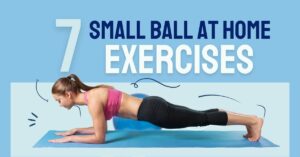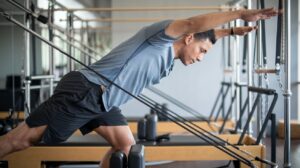Table of Contents
ToggleWhy Work on Your Back?
Hey there! Have you ever thought about why a strong back is so important? Your back muscles are essential for much more than just looking good at the beach. A strong back helps with your posture, making it easier to sit or stand for long periods without feeling tired or sore. It also plays a big role in lifting, carrying, and many other everyday movements.
Think about this: when you carry groceries, pick up your younger sibling, or even play sports, your back muscles are doing a lot of the heavy lifting (literally!). Working out your back is crucial if you want to avoid common issues like lower back pain or bad posture as you get older.
Plus, a well-built back makes your waist look smaller, giving you that strong, “V-shape” body. So, if you’re aiming to look fit and stay healthy, the back day should definitely be part of your weekly routine!
Muscles You’re Working On:
When planning your back workout, you must understand which muscles you’re targeting. Don’t worry—this part is simpler than it sounds and can help you make the most of your workout.
Upper Back Muscles:
The upper back mainly comprises the trapezius (often called the traps) and rhomboids. The trapezius is a kite-shaped muscle that starts at the base of your skull and runs down to your mid-back. It’s responsible for movements like shrugging and rotating your shoulders.
The rhomboids are smaller muscles that sit between your shoulder blades. These muscles help pull your shoulders back, which is important for good posture. Ever heard someone say, “Stand up straight”? That’s your rhomboids at work!
Imagine this: Your trapezius is like the strings of a puppet that controls how your shoulders move, while your rhomboids pull everything into place like strong elastic bands.
Lower Back Muscles:
The lower back is supported by the erector spinae, a group of long muscles that run along your spine. These muscles keep your back straight and stable when you bend, twist, or lift objects. Think of them as the core of your spine’s support system.

Another key muscle is the latissimus dorsi or lats. These are large, wing-like muscles that extend from your lower back up to your arms. They’re responsible for movements like pulling and lifting, giving you that wide-back look.
Quick Tip: Strengthening your lats can help you do better in sports, from swimming to rock climbing, because they add power to your pull motions.
Warm-Up Tips for a Safe Workout:
Before you jump into any heavy lifting, warming up is super important. Warm-ups prepare your muscles, increase your heart rate, and reduce the risk of injury.
Stretching Exercises:
A good warm-up should include stretches that target your back and shoulder areas:
- Cat-Cow Stretch: Start on your hands and knees. Round your back up like a cat, then dip your stomach down while lifting your head and hips like a cow. This stretch warms up your spine and helps you ease into more intense exercises.
- Arm Circles: Stand up straight and extend your arms to the sides. Make small circles for 30 seconds and then larger ones for another 30 seconds. This movement loosens up your shoulders and upper back.
Light Cardio:
Adding 5 minutes of light cardio to your warm-up can really make a difference:
- Jumping Jacks: Do a set of 50 to get your heart rate up.
- Jogging in Place: Jog for 2-3 minutes to get your blood flowing.
Remember: A good warm-up is like stretching before a big race; it primes your body so you can perform your best!
Back Day Exercises for Beginners:
If you’re new to back workouts, starting with basic exercises can help you build strength safely and effectively.
Bent-Over Rows:
Bent-over rows target the middle of your back, including the rhomboids and lats.
- Hold a weight in each hand, such as a dumbbell.
- Stand with your feet shoulder-width apart and bend your knees slightly.
- Lean forward from your waist while keeping your back straight.
- Pull the weights toward your chest, squeezing your shoulder blades together.
- Lower the weights slowly and repeat for 3 sets of 10 reps.
Pro Tip: Keep your elbows close to your body as you row the weights for better results.
Lat Pulldowns:


Lat pulldowns are great for targeting the lats and help you build that “V-shape” back.
- Sit at a lat pulldown machine and grab the bar with both hands, palms facing forward.
- Pull the bar down toward your chest while squeezing your lats.
- Slowly release the bar back up. Repeat for 3 sets of 8-12 reps.
Struggling? Use a lighter weight until you get the hang of the movement.
Deadlifts:
Deadlifts are full-body moves that focus on your lower back and legs.
- Stand with your feet hip-width apart and position a barbell on the floor before you.
- Bend at your hips and knees to grab the bar with both hands.
- Keep your back straight as you lift the bar by extending your legs and hips.
- Lower the bar slowly to the floor. Complete 2-3 sets of 8 reps.
Safety Tip: Always keep your back straight and lift with your legs, not your back, to prevent injuries.
Intermediate Moves to Level Up:
If you’ve mastered the beginner exercises, you’re ready for more challenging moves that build even more strength.
Pull-Ups:
Pull-ups are a classic exercise that targets your upper back and biceps.
- Find a pull-up bar and grab it with an overhand grip (palms facing away).
- Pull your body up until your chin is above the bar.
- Lower yourself down in a controlled manner. Do 2 sets of as many reps as you can.
Too hard? Use a resistance band or an assisted pull-up machine to help you build strength over time.
Seated Cable Rows:
Seated cable rows help develop the middle part of your back.
- Sit at a cable machine with your feet on the platform.
- Grab the handle with both hands and pull it toward your torso, squeezing your back muscles.
- Return to the starting position. Repeat for 3 sets of 10 reps.
Think of it like this: Pretend you’re rowing a boat—use that same pulling motion to engage your back muscles fully.


Advanced Back Day Challenges:
Ready to push your limits? These advanced exercises will help you build serious back strength and definition.
T-Bar Rows:
T-bar rows are fantastic for building overall back thickness and strength.
- Place one end of a barbell in a corner or a landmine attachment.
- Load the other end with weight plates and straddle it.
- Pull the bar toward your chest, squeezing your shoulder blades.
- Lower it back down slowly. Perform 3 sets of 8-10 reps.
Advanced Tip: Keep your core tight and slightly bend your knees for better stability.
One-Arm Dumbbell Rows:
These rows help you focus on one side of your back at a time, correcting any muscle imbalances.
- Place one knee and one hand on a bench, keeping your other foot on the ground.
- Hold a dumbbell in the opposite hand and pull it up to your hip.
- Lower it slowly and repeat for 10 reps. Switch sides and do 3 sets.
Bonus Tip: Don’t rush—control the movement to engage your muscles fully.
Cool Down and Recovery:
Cooling down after your workout is just as important as warming up. It helps your muscles relax and reduces soreness.
Stretching Post-Workout:
Some effective post-workout stretches include:
- Child’s Pose: Sit back on your heels with your arms stretched out in front of you. Hold for 30 seconds.
- Cat-Cow Stretch: Perform this stretch for another minute to help release any tension in your back.
Rest and Muscle Recovery:
Recovery is when your muscles actually get stronger. This means taking time to rest, eating well, and staying hydrated.
- Hydration: Drink water or electrolyte-infused beverages to replenish what you’ve lost.
- Protein-Rich Meals: Eat foods like chicken, fish, or tofu to help rebuild your muscles.
How to Get Started:
Feeling excited? Here’s how you can start your back-day journey:
➊ Start with Light Weights: If you’re new, begin with lighter weights and focus on getting your form right.
➋ Warm Up Properly: Never skip the warm-up; it’s the key to preventing injuries.
➌ Change Up Your Routine: Mix in different exercises every few weeks to keep your muscles guessing.
➍ Track Your Progress: Track the weights you lift and how many reps you do to see your growth over time.
➎ Stay Consistent: Progress takes time, so keep showing up and doing the work.
Further Resources:
Want to learn more? There are tons of fitness apps, YouTube tutorials, and workout guides available to help you perfect your form and try out new exercises. Some of the best resources for back workouts include:
- YouTube Channels: Check out fitness-focused channels for visual demonstrations.
- Workout Apps: Use apps like MyFitnessPal or JEFIT to track your progress and find new routines.
- Blogs and Articles: Read fitness websites for more detailed training plans and nutrition advice.
Key Takeaways For Back Day Workouts:
- Your back is crucial for strength, posture, and overall well-being.
- Start with beginner exercises and work your way up to advanced moves.
- Warm-ups and cool-downs are non-negotiable for safety and effectiveness.
- Consistency is the magic ingredient—stay dedicated, and you’ll see results.
So, what are you waiting for? Gear up for your next back day and build the strength you deserve!
Faqs For Back Day Workout:
Why is it important to have a back workout day?
A strong back helps with posture, prevents injuries, and supports everyday activities like lifting and carrying.
What are some beginner exercises for back workouts?
Bent-over rows, lat pulldowns, and deadlifts are great beginner exercises that target different back muscles.
How can I warm up before a back workout?
Warm up with light cardio (like jumping jacks) and stretches such as the cat-cow stretch to prepare your back muscles.
What’s the best way to cool down after a back workout?
Use stretches like the child’s pose and cat-cow stretch to help relax your muscles and aid recovery.
How often should I do back workouts?
Aim to train your back 1-2 times a week, allowing at least 48 hours of rest between sessions for muscle recovery. These are the best back day workouts.











